アザミは葉や総苞に鋭いトゲがあり、触れると手指を傷つけます。一方、若芽が味噌汁の具や天ぷらなど、根が味噌漬けなどで食べられます。
Thistles have sharp thorns on their leaves and bracts that can hurt their fingers when touched. On the other hand, young shoots can be eaten with miso soup and tempura, and roots can be eaten pickled with miso.
【仮名】アザミ, ノアザミ, タイアザミ, フジアザミ, ノハラアザミ, ハマアザミ, モリアザミ
【和名】薊, 野薊, 大薊, 富士薊, 野原薊, 浜薊, 森薊
【英名】Thistle
【学名】Cirsium
【誕生】03/ 19, 04/ 19, 09/ 18, 10/ 21
【開花】04, 05, 06, 07, 08, 09, 10月
【花色】Purple
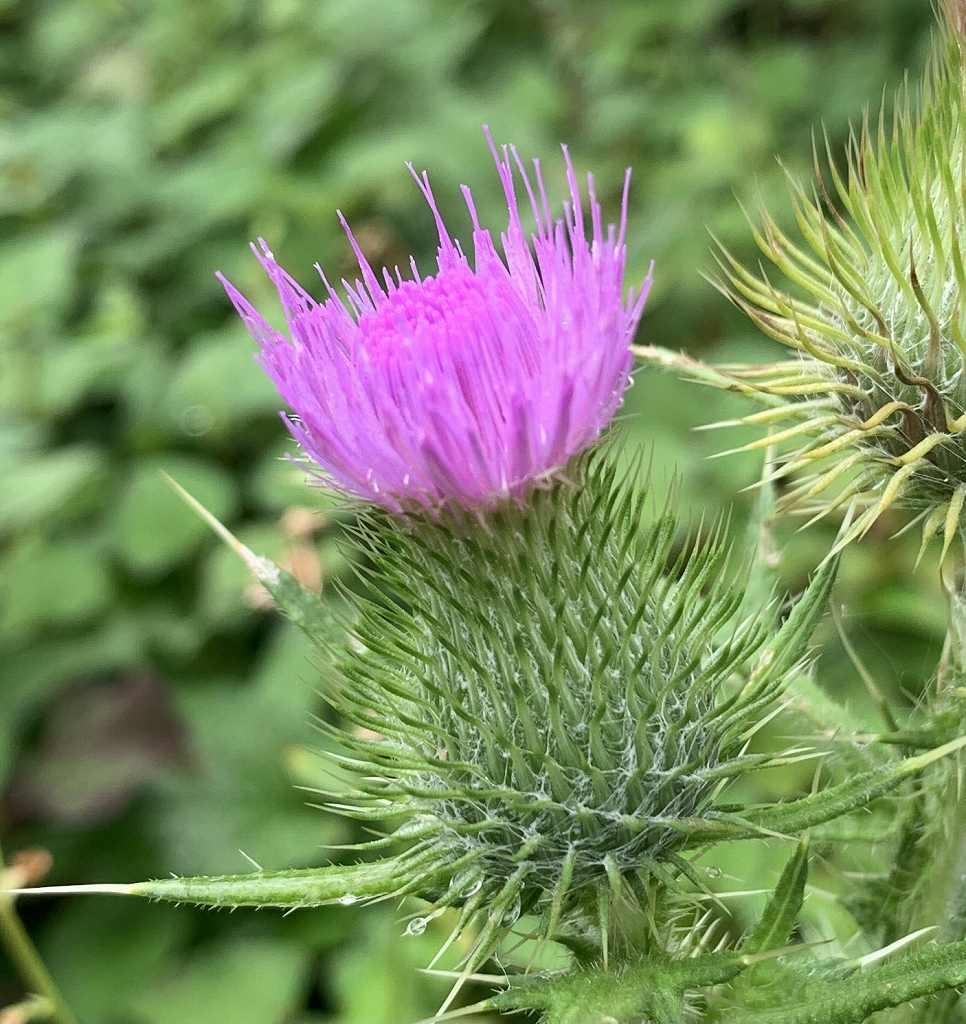
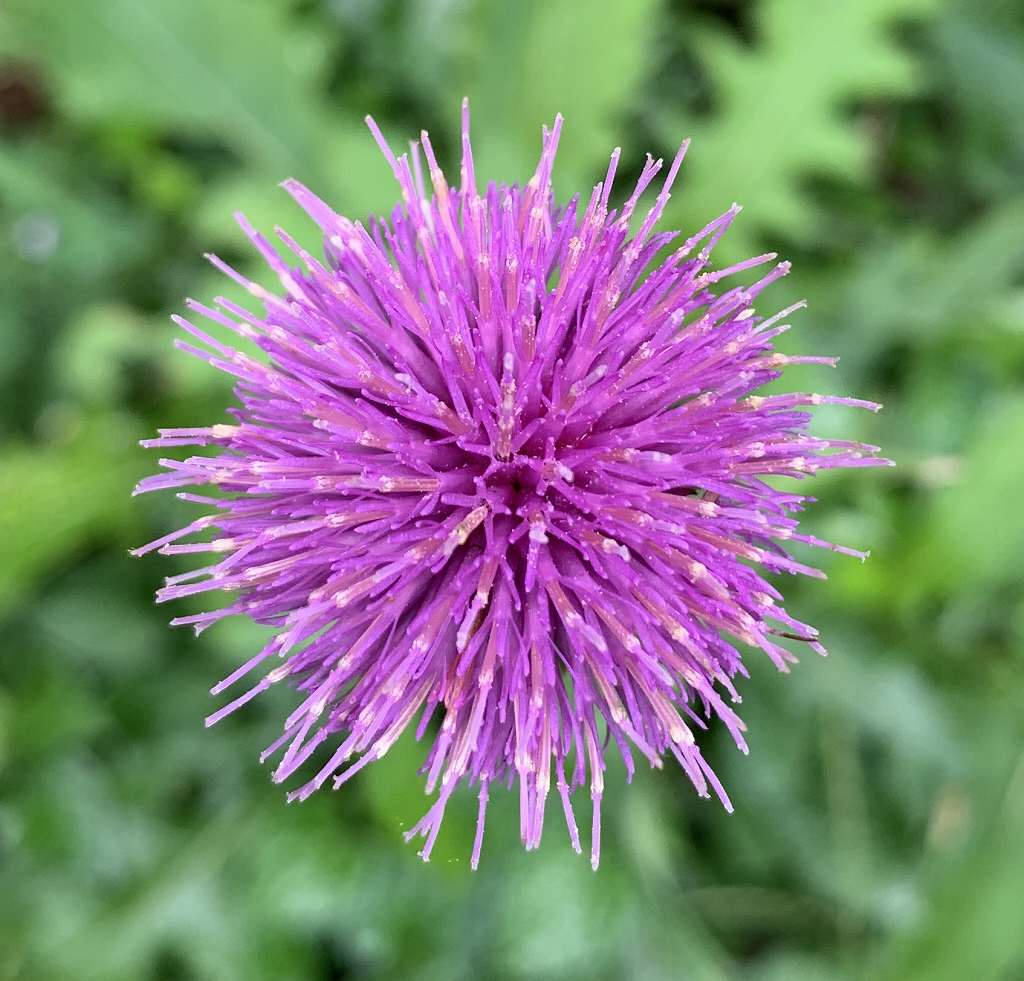
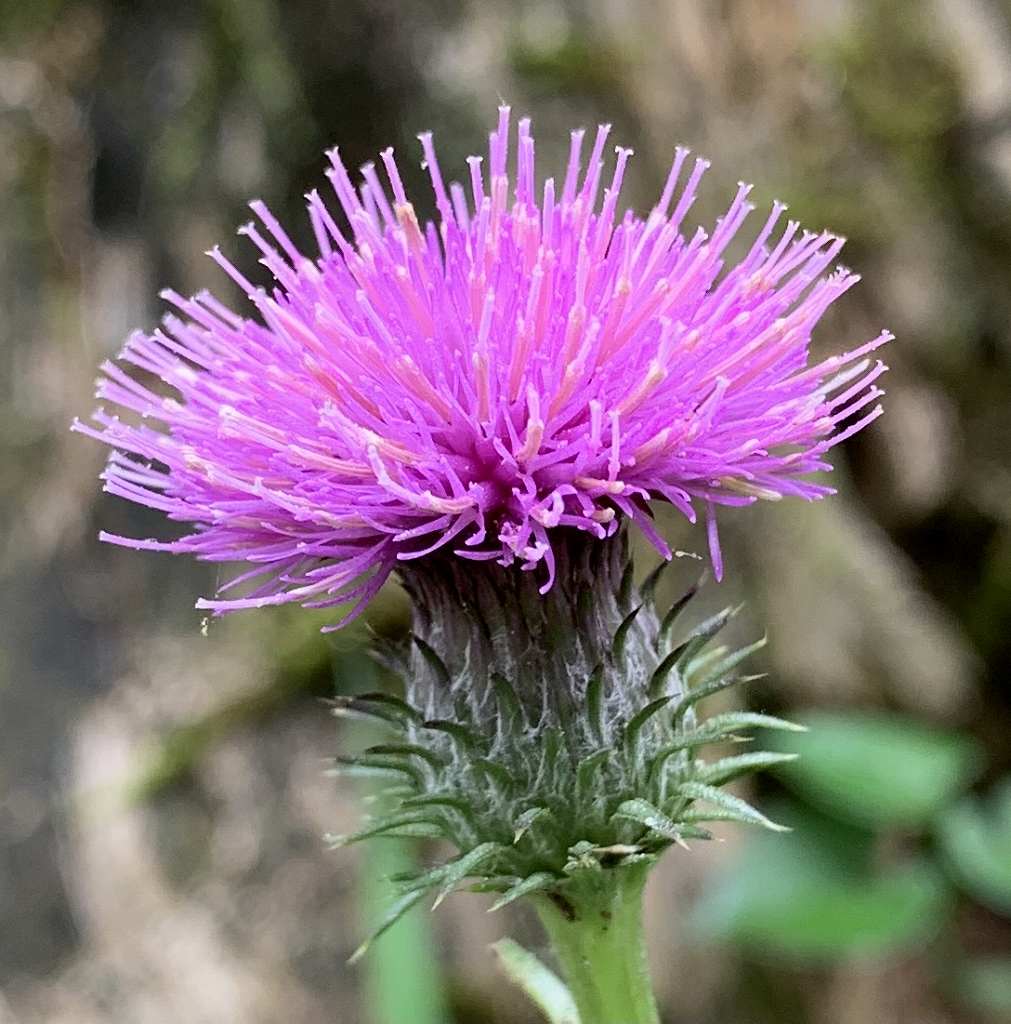

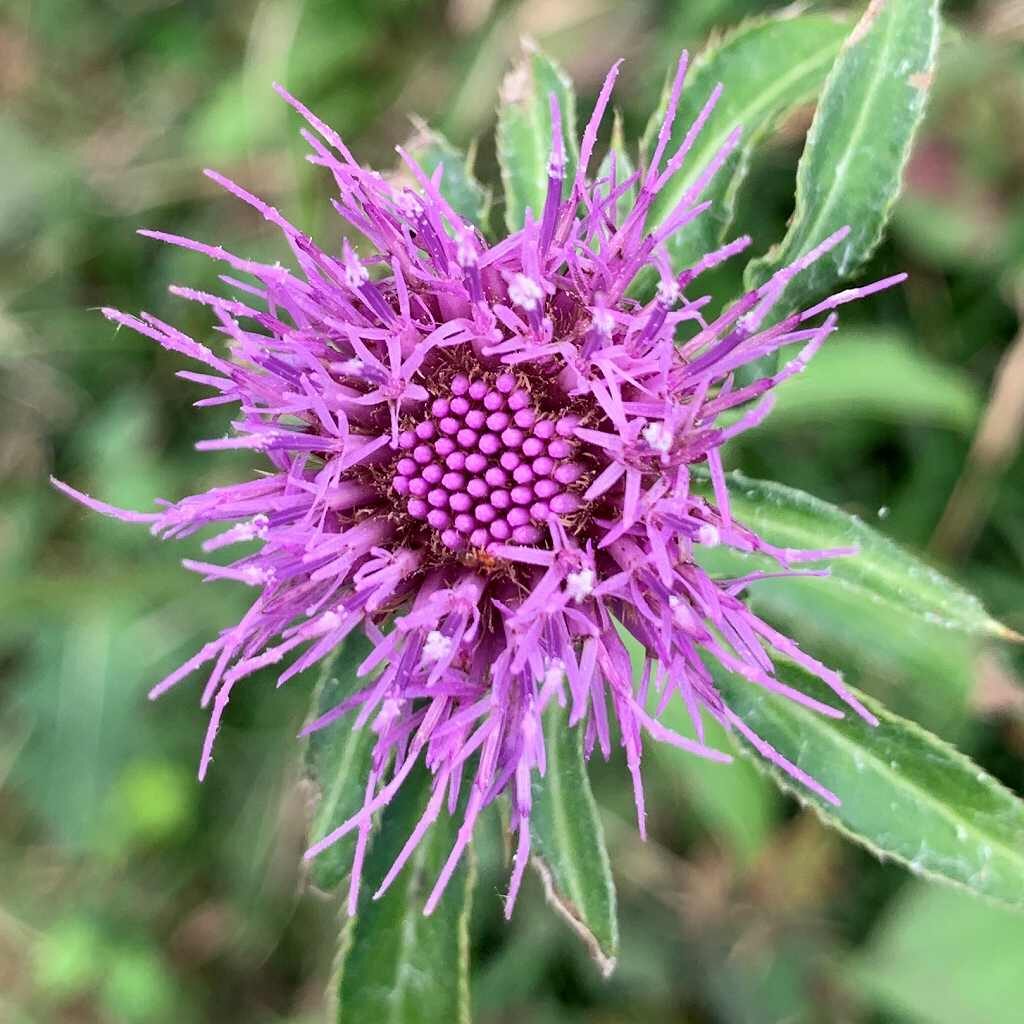
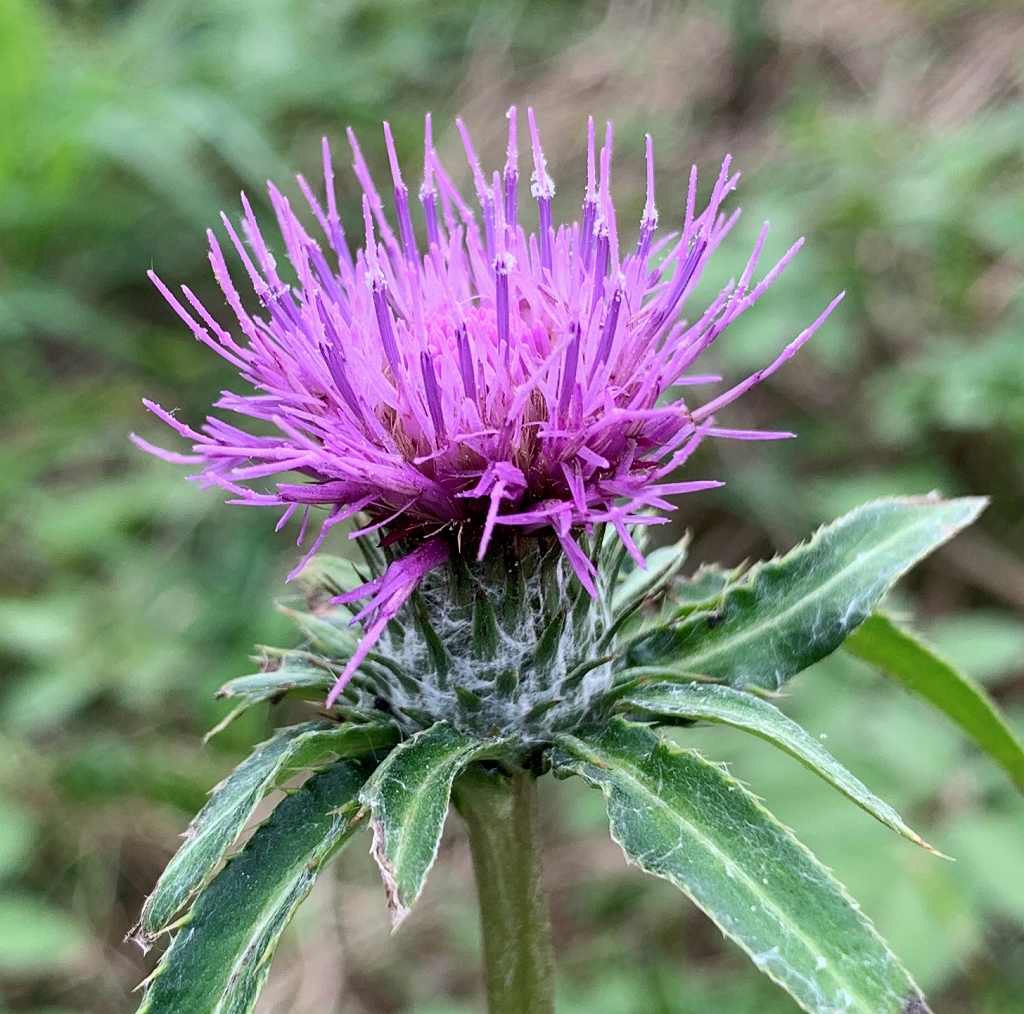
アザミ
アザミの分布
アザミはキク科の多年草で、世界に250種以上、日本に100種以上分布しています。変異しやすく、今でも新種が見つかることも。日当たりの良い草原や乾燥地、海岸などで自生しています。
アザミの種類
広く分布するアザミの種類は代表的な野薊、花が大きな大薊、富士薊、秋に咲く野原薊、海岸の浜薊、食用になる森薊のほか、南部薊、鬼薊、煙管薊、沢薊、立薊、筑紫薊、高薊などです。
アザミの名前
アザミの名前は「あざむ」という古い言葉に由来します。意味は「傷つける」「驚き呆れる」。葉や総苞に鋭いトゲがあるため、花に惹かれて触れると手指を傷つけ、痛みに驚くからです。
アザミの花序
アザミの花序はキク科で多く見られる舌状花がなく筒状花だけ。それも硬い管が突き出して、さながら針山のようです。雄しべと雌しべは昆虫で受粉。種子は冠毛が着いて風で飛散します。
アザミの食用
アザミの食用は、若芽が味噌汁の具や天ぷらに使われたり、根が「山ごぼう」「菊ごぼう」という呼称で味噌漬けなどに加工されます。民間療法では育毛、頭痛、潰瘍、眩暈、黄疸などに。
アザミの花言葉
アザミの花言葉は、強力な敵軍をアザミで撃退したスコットランドの伝説により「独立」「報復」、アザミの鋭いトゲにより「触れないで」、凛として誰も寄せつけないから「厳格」です。
Thistle
Thistle is a perennial plant of the Asteraceae family, and more than 250 species are distributed in the world and more than 100 species are distributed in Japan. It is easy to mutate, and new species can still be found. It grows naturally in sunny grasslands, drylands, and coasts.
The types of thistles that are widely distributed are Noazami, Taiazami, Fujiazami, Noharaazami, Hamaazami, Moriazami, as well as Nanbuazami, Oniazami, Kiseruazami, Sawaazami, Tachiazami, Tsukushiazami, Takaazami, etc.
Thistle’s name comes from the old word “Azamu”. The meaning is “hurt” and “surprise and amazed”. The leaves and bracts have sharp thorns, so if you are attracted to the flowers and touch them, you will hurt your fingers and you will be surprised by the pain.
The inflorescence of thistle is only tubular flowers without tongue-shaped flowers that are often seen in Asteraceae. It’s also like a pincushion with a hard tube sticking out. Stamens and pistils are pollinated by insects. The seeds have pappus and are scattered by the wind.
For edible thistles, young shoots are used as ingredients for miso soup and tempura, and roots are processed into miso under the names of “Yamagobo” and “Kikugobo”. Folk remedies for hair growth, headaches, ulcers, dizziness, jaundice, etc.
Thistle’s flower language is “independence” and “retaliation” according to the Scottish legend that repelled a powerful enemy army with thistle, “don’t touch” due to the sharp thorns of thistle, and “strict” because it is dignified and no one can approach.


